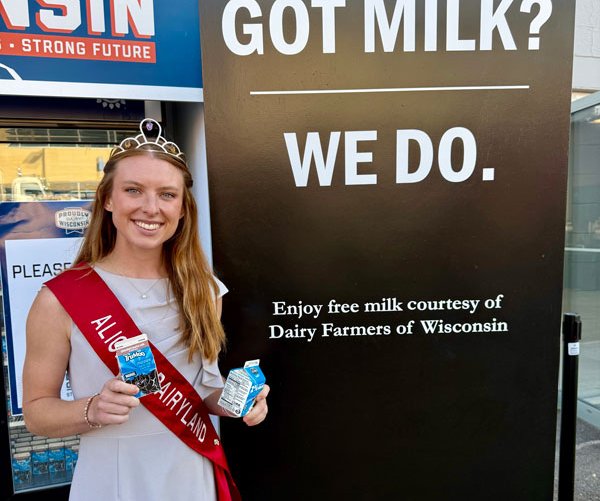Many of us can recall a favorite nursery rhyme from childhood. Twinkle Twinkle Little Star, Hickory Dickory Dock, and Old MacDonald have kept children entertained for generations. Of course, Little Miss Muffet is a favorite in Wisconsin as she ate her curds and whey. As a child, I was very familiar with delicious, squeaky cheese curds, but I didn’t put much thought in to what exactly whey was. I had no idea how important whey is to Wisconsin’s signature $45.6 billion dairy industry.
Whey is the byproduct of cheesemaking. It is a protein-rich liquid left behind after the curds are separated. To give you a complete picture, 10 pounds of four-percent milk will yield about 1 pound of cheese and 9 pounds of whey. We know what happens to the delicious cheese, but what about the whey?
Whey was once considered a waste product however, innovators in the dairy industry have crafted a market for this value-added product. Food scientists filter liquid whey to remove fat, lactose, minerals and water, leaving behind the powerful protein.
Wisconsin is the top producer of dry whey for human consumption supplying 311,836,000 pounds in 2021, more than a third of the nation’s total. There are eight dairy plants that make dry whey for human consumption across the state. Those products are shipped around the world, giving a boost to our state’s economy as Wisconsin leads the nation for whey exports.
People of all ages and backgrounds can enjoy the benefits of whey. Whether used as a supplement or an ingredient in food, whey is easily digestible, making it an ideal product. Athletes can utilize the boost of amino acids that metabolize directly into muscle tissue. Whey proteins can help the elderly prevent bone loss while strengthening the immune system. Even infants benefit from whey as it is commonly found in baby formulas. Research and technology will continue to unlock the nutritional value of whey as more products reach the market.
After measuring the nutritional and economic value of whey for Wisconsin, it is no wonder Miss Muffet ate her curds and whey together. It will take much more than a spider to frighten away those who can enjoy this nutrient-dense food while supporting Wisconsin’s dairy farmers and processors.
— Taylor Schaefer is the 75th Alice in Dairyland, Wisconsin’s agriculture ambassador who works with media professionals to educate consumers about the importance of agriculture to Wisconsin’s economy and way of life. She can be reached at taylor.schaefer@wisconsin.gov.





